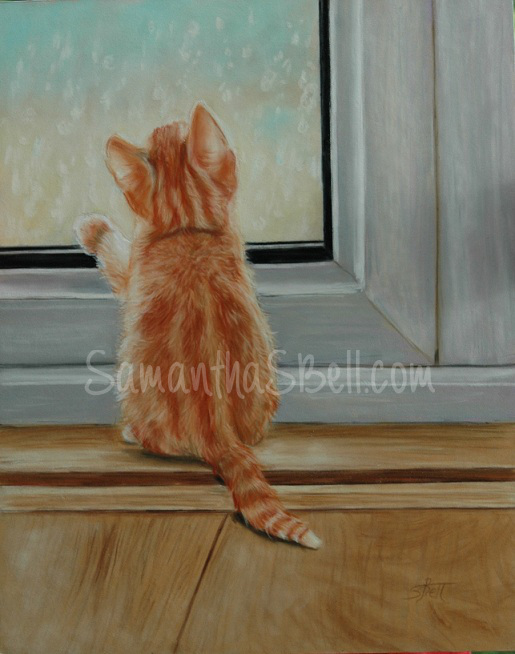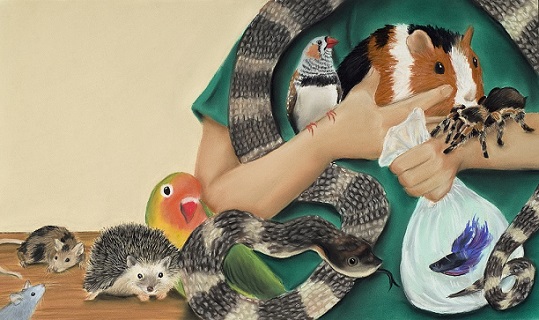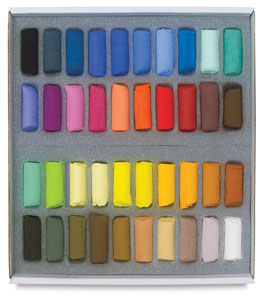
Several years ago, I came across a book in our library called Painting Animals That Touch the Heart by pastel artist Leslie Harrison. Leslie creates pastel paintings of horses and wildlife that are incredibly realistic. Because wildlife is my favorite subject to paint, I couldn’t wait to try her techniques.
Soft pastels, also called chalk pastels, have more pigment and less binder, allowing them to create rich paintings in brilliant colors. Because of their powdery consistency, the colors are easily blended together. This makes them more breakable, however, and a little bit harder to control. They also don’t do well at making fine lines. But not to worry! You can supplement your them with hard pastels or pastel pencils when you need to draw details.
Pastels are produced for both artists and students. Artists’ quality pastels are use the best pigments and are more resistant to fading. These, of course, are more expensive than the student quality pastels.
Pastels also differ in texture, size, and softness depending on the manufacturer. If, after purchasing your initial set, you still need more colors, you can buy one or two sticks at a time from the various lines. They can all be used together, and you’ll be able to discover which types you like best. Dakota Pastels has a chart listing the various brands by softness.
 I really like the effects you can get when drawing fur and other soft textures; I haven’t been able to achieve that same look with any other medium yet. I really like the vibracy of the colors, too. I used soft pastels for all of the illustrations in The Perfect Pet
I really like the effects you can get when drawing fur and other soft textures; I haven’t been able to achieve that same look with any other medium yet. I really like the vibracy of the colors, too. I used soft pastels for all of the illustrations in The Perfect Pet.
But while Leslie Harrison mentions in her book that she immediately loved the medium, I’m not sure soft pastels are my favorite. They can be very powdery and dusty, and some pigmets are toxic. Breathing in the dust can cause health problems, so precautions should be taken when working with pastels.
Do you like working with soft pastels? What do you like best about the medium?


Please note: Only family-friendly comments will be published.